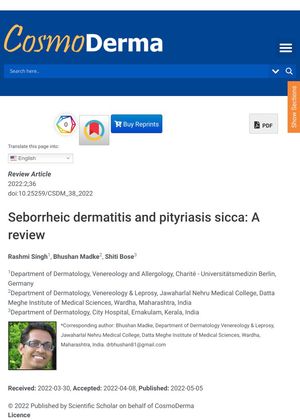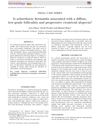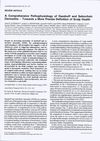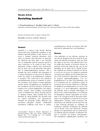Seborrheic Dermatitis and Pityriasis Sicca: A Review
May 2022
in “
Cosmoderma
”
seborrheic dermatitis pityriasis sicca dandruff Malassezia innate immunity hair loss inflammation follicle anti-yeast anti-inflammatory antiproliferative sebum reducing agents topical antifungal agents ketoconazole miconazole bifonazole Itraconazole isotretinoin sebum secretion M. furfur Nizoral Monistat Canesten Sporanox Accutane

TLDR Seborrheic dermatitis and dandruff are often treated with antifungal and anti-inflammatory medications, which can reduce symptoms and yeast growth on the scalp.
Seborrheic dermatitis (SD) and pityriasis sicca (dandruff) are common scalp conditions affecting up to 50% of adults, caused by an overgrowth of the yeast Malassezia and a disturbance in innate immunity. These conditions can lead to hair loss due to inflammation altering the anchoring of hair fiber in the follicle. Treatments include anti-yeast, anti-inflammatory, antiproliferative, and sebum reducing agents, with topical antifungal agents like ketoconazole, miconazole, and bifonazole commonly used. A study found Itraconazole effective in 83.3% of SD cases, and another study on 45 patients showed low-dose isotretinoin significantly reduced sebum secretion on the face and scalp within three months, reducing the colonization of M. furfur.








